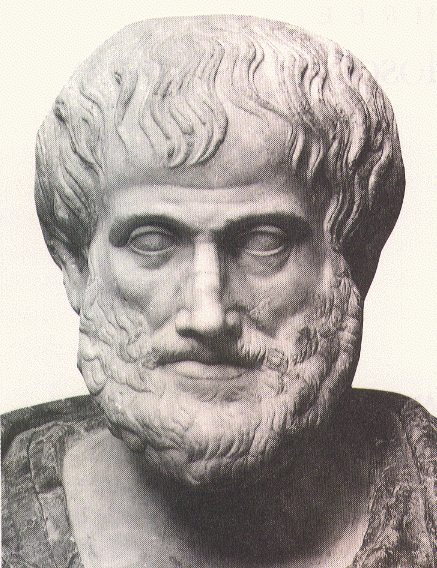

Summary of Aristotle idea of motions of heavenly bodies:
Starting from the hypothesis that heavenly bodies have a natural circular motion, Aristotle postulated that all such bodies move in spheres around the Earth, Aristotle painstakingly modified this idea, matching it to the observations, until all data could be accurately explained.
Is this Science? How does this differ from Galen?
He then used this theory to make predictions
(such as where will Mars be next "year")
which were confirmed by subsequent observations. This gave the
model real power.  There is also no credible
observations that could disprove this model, at the time. There are
only some observations which are slightly inconsistent.
There is also no credible
observations that could disprove this model, at the time. There are
only some observations which are slightly inconsistent.
One problem with Aristotle is the immensely vague way in which he describes motion. An Example:
| That a final cause may exist among unchangeable entities is shown by the distinction of its meanings. For the final cause is (a) some being for whose good an action is done, and (b) something at which the action aims; and of these the latter exists among unchangeable entities though the former does not. The final cause, then, produces motion as being loved, but all other things move by being moved. Now if something is moved it is capable of being otherwise than as it is. Therefore if its actuality is the primary form of spatial motion, then in so far as it is subject to change, in this respect it is capable of being otherwise,--in place, even if not in substance. But since there is something which moves while itself unmoved, existing actually, this can in no way be otherwise than as it is. For motion in space is the first of the kinds of change, and motion in a circle the first kind of spatial motion; and this the first mover produces. The first mover, then, exists of necessity; and in so far as it exists by necessity, its mode of being is good, and it is in this sense a first principle. For the necessary has all these senses--that which is necessary perforce because it is contrary to the natural impulse, that without which the good is impossible, and that which cannot be otherwise but can exist only in a single way. (Metaphysics, Book XII, Chapter 7, 1072) |
Testing Arisotle's Concept of Motion with Simple Class Experiments:
One of the fundamental propositions of Aristotelian philosophy is that there is no effect without a cause.
Applied to moving bodies, this proposition dictates that there is no motion without a force. Speed, then is proportional to force and inversely proportional to resistance (though none of these quantites are unambiguously defined).
Qualitatively this implies that a body will traverse a thinner medium in a shorter time than a thicker medium (of the same length): things will go faster through air than through water.
Let's test this hypothesis:
Class Discussion Question: What is the logical consequence
of motion in a vacuum, under this hypothesis?
For falling bodies, the force is the weight pulling down a body and the
resistance is that of the medium (air, water, etc.). Aristotle noted that
a falling object gains speed, which he then attributed to a gain in weight.
If initial weight determines the speed of fall, then when two different weights are dropped from a high place the heavier will fall faster and the lighter slower, in proportion to the two weights. A ten pound weight would reach the Earth by the time a one-pound weight had fallen one-tenth as far.
Let's test this hypothesis!
According to Aristotle, there is a privileged being: The Prime Mover. He is the first agent, responsible for moving objects, which, in turn, move other objects.
The Prime Mover, he argued, must be at Absolute Rest. By "absolute" rest , we mean that all observers will universally agree on that state of rest.
Projectile Motion: In Aristotle's view, objects moved
parallel to the Earth's surface until it was time (i.e. it was their
destiny) to fall back to the earth
Thus, according to Aristotle, projectile motion from a cannon would look like this:

Okay, let's test this one as well
Interesting historical experiment proving this completely wrong but
the importance of that seems to have been lost:
Archimedes of Syracuse (287 - 212 BCE) took a more practical approach. At the request of Hieron, the tyrant of Syracuse and a family friend, Archimedes interrupted his mathematical researches long enough to apply his understanding of levers and pulleys to the construction of remarkable catapults and cranes to defend the city against Roman attack. Archimedes' catapults lobbed quarter-ton stones at the attacking Roman ships, quickly destroying the clumsy Roman siege engine.
Had physics worked the way Aristotle said, hitting targets with catapults would be damn difficult!